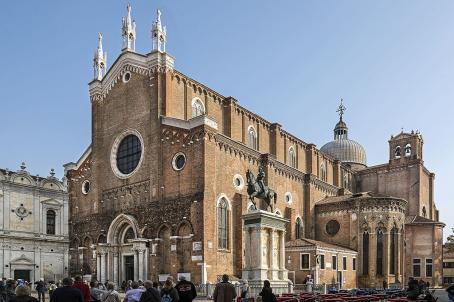Basilica of Santo Stefano Rotondo al Celio

The Basilica of Santo Stefano Rotondo al Celio was founded by Pope Simplicius between 468 and 483 and is dedicated to Saint Stephen, a martyr whose body had been found a few decades earlier in the Holy Land and transported to Rome. The church was embellished by Popes John I and Felix IV in the 6th century. In 1130, Innocent II added three transverse arches to support the dome. In 1454, Pope Nicholas V entrusted the ruined church to the care of the Hungarian Pauline Fathers. The church was restored by Bernardo Rossellino. In 1579, the Hungarian Jesuits took over from the Pauline Fathers.





